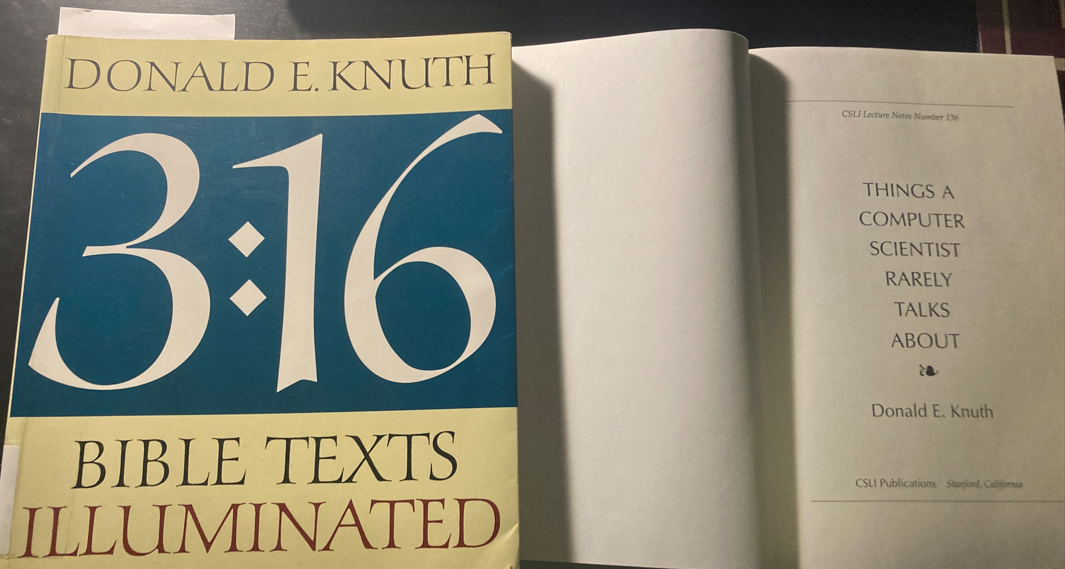Donald Knuth and the most revered bounties in Computer Science
Donald Knuth’s “The Art of Computer Programming” (TAOCP) stands as a monumental work in computer science. Bill Gates once said that if you can read it, to “send me a resume.”. This comprehensive series, which Knuth has been developing for over five decades, has become a cornerstone of computer science education and research.
Knuth, the 1974 Turing Award recipient who the NY Times labeled “The Yoda of Silicon Valley” originally conceived TAOCP as a single book with twelve chapters in 1962. However, the project expanded significantly, with the first three volumes published between 1968 and 1973. The series continues to evolve, with Volume 4B published in September 2022 and Fascicle 7 (planned for Volume 4C) scheduled for release on February 19, 2025.
One of the most intriguing aspects of Knuth’s work is his commitment to accuracy and his unique reward system for error reporting. Knuth offers a “Hexadecimal dollar” ($2.56) to the first person who finds an error in his published books, whether technical, typographical, or historical. More recently, he has added to this with a section stating that hexadecimal 20 cents, or $0.32, would be awarded to those who offered “significant suggestions.” This reward system, known as the “Knuth reward check,” has become legendary in the computer science community.
Initially, Knuth issued real checks for these rewards. However, in 2008, he transitioned to issuing “personal certificates of deposit” from the fictional Bank of San Serriffe (found here: Bank of San Serriffe). Despite this change, the prestige associated with receiving a Knuth reward remains high. Many recipients have chosen to keep their old checks uncashed, valuing the bragging rights more than the monetary amount. The Bank also features a “leaderboard,” in Hexadecimal to keep with the theme…
Alongside this, there are many interesting aspects of the TAOCP project. All of the code examples in the books use a hypothetical language called “MIX assembly language” (MIXAL), which runs on “a mythical computer called MIX.” One of the eccentricities of these books, and perhaps Knuth himself, is the analysis of computer programming from the assembly language level, something that allows much more room for error (hence the bounties perhaps) than the traditional higher level languages computer programmers use today. It was also one of the main resources which utilized Big-O notation early on, which, ignoring specifics, allows for programmers to benchmark programs.
Now 87, Donald Knuth still has three full volumes of the TAOCP collection planned: Syntactic Algorithms, The Theory of context-free languages, and Programming language translation. Currently, the fourth (of seven) volumes is being completed, covering combinatorial algorithms.
In addition to his magnum opus, Knuth has also written several other notable books and programs. Famously annoyed at typesetting errors/arguments occurring with the early TAOCP books, he invented a whole new language called TeX in 1978. For those who are unfamiliar, this is one of the most critical languages that computer scientists learn today, and is (at its simplest) a software engineering replacement of Microsoft Word. TeX or its derivative LaTeX are widely used for typesetting in textbooks and other technical literature today. He also wrote a book on religion, “3:16 Bible Texts Illuminated,” examining the sixteenth verse of each third chapter in the books of the Bible. Unfortunately, his bounties do not extend to this work, as criticisms would need to be taken up with God. He also expands on his faith as a Christian, as well as morality and other topics, in the book “Things a computer scientist rarely talks about.”
As an electrical engineer interested in programming, but not enough to be a computer science major, my initial intimidation regarding the TAOCP collection led me to instead perform more research into his other works, in particular the last two mentioned on religion and his “TeXbook” where he details the origins of TeX. Over the last week, I read part of the first volume of TAOCP as well, and have found it informative (albeit dense, even for someone with a background in computing).
Knuth’s work continues to shape the field of computer science. His books are still widely used in undergraduate and graduate courses. The American Scientist magazine included the collected volumes of TAOCP on its list of books that shaped science during the last century. Knuth’s philosophy that “computer programming is an art” has inspired generations of computer scientists to approach their work with creativity and patience. His ongoing work on TAOCP and his continued contributions to the field ensure that his influence will be felt for decades to come.

Books I obtained from the library
References
Knuth reward check - Wikipedia The Art of Computer Programming - Assembly language in the book - Wikipedia Donald Knuth - The Art of Computer Programming (TAOCP) - Wikipedia Knuth’s TAOCP Official Website